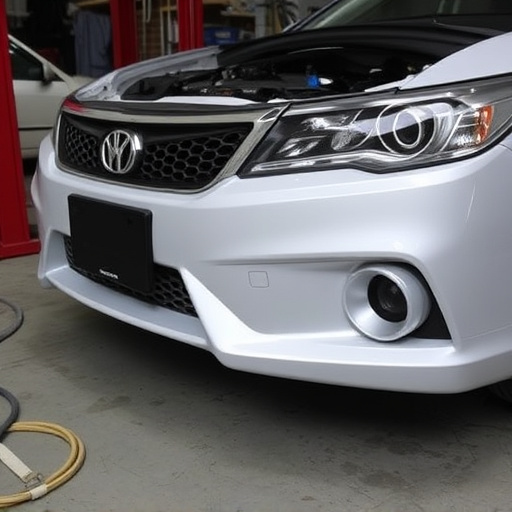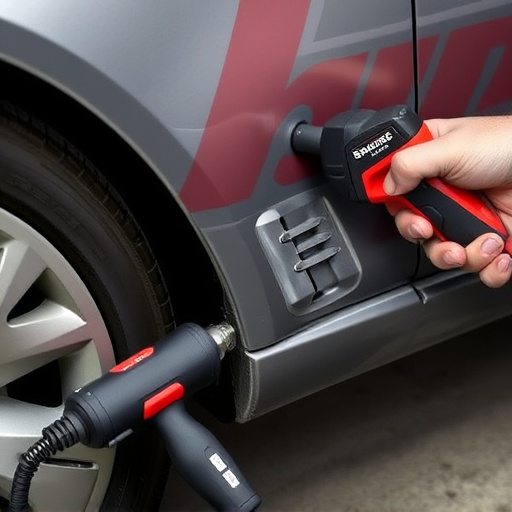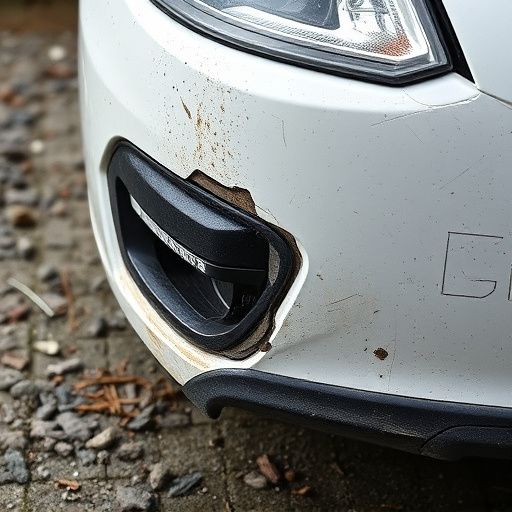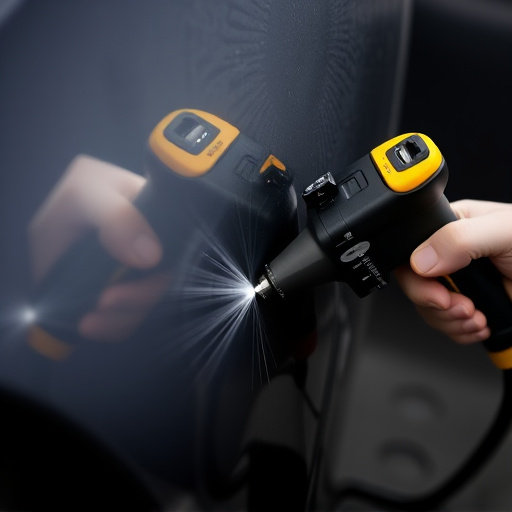Airbag module replacement is a safety-critical process requiring specialized tools and trained technicians. Advanced diagnostics ensure proper function, compatibility, and reliability of new modules, enhancing vehicle and occupant security. This meticulous approach, vital for collision repair professionals, maintains industry standards and public trust.
Airbag modules are critical safety features in modern vehicles, deploying rapidly in the event of a collision. When an airbag module fails or is damaged, precise replacement is essential for passenger safety. This article explores the intricate world of airbag module replacement, highlighting the pivotal role diagnostic tools play in ensuring the process is effective and secure. From understanding module functionality to implementing rigorous testing methods, we delve into the necessary steps to maintain vehicular safety during replacements.
- Understanding Airbag Modules and Their Functionality
- Importance of Diagnostic Tools in Replacement Process
- Ensuring Safety: Accurate Testing and Verification Methods
Understanding Airbag Modules and Their Functionality

Airbag modules are integral safety components found in modern vehicles, designed to protect occupants during collisions. These sophisticated systems consist of an inflator and a fabric airbag, working together to provide rapid deployment and impact mitigation. When an accident occurs, sensors detect the force and trigger the module, filling the airbag with gas in fractions of a second. This swift action helps prevent severe injuries by restraining the driver and passengers from striking the vehicle’s interior or being ejected from the car.
Proper functionality of the airbag module is crucial for optimal passenger safety. Over time, these modules can degrade or be damaged due to accidents or wear and tear, necessitating replacement. Airbag module replacement is a critical procedure in automotive restoration, ensuring that vehicles meet safety standards. Auto repair shops equipped with specialized tools and trained technicians handle this process, employing advanced diagnostic tools to identify issues and verify proper inflation and deployment. This meticulous approach guarantees that replaced modules function flawlessly, enhancing the overall safety of the vehicle for every journey.
Importance of Diagnostic Tools in Replacement Process
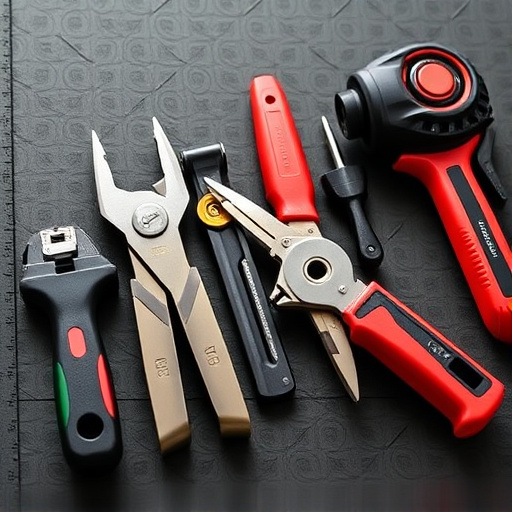
In the intricate process of airbag module replacement, diagnostic tools play a pivotal role, acting as the unsung heroes ensuring the safety and efficacy of the final product. These advanced instruments facilitate a thorough examination of the vehicle’s existing airbag system, identifying any defects or discrepancies that could impact performance. By employing diagnostic tools, technicians can uncover hidden issues related to sensor functionality, electrical connections, and software integrity—elements crucial for the timely and reliable deployment of airbags during emergencies.
The integration of these tools streamlines the replacement process, making it more precise and efficient. They enable specialized professionals to cross-reference manufacturer specifications with real-time data, confirming compatibility and optimal settings for the new airbag module. Moreover, diagnostic capabilities extend beyond installation, offering ongoing monitoring and potential troubleshooting for peace of mind on the road—a valuable service often sought after by car paint services and bumper repair specialists following a fender bender.
Ensuring Safety: Accurate Testing and Verification Methods

In the meticulous process of airbag module replacement, ensuring safety is paramount. This involves rigorous testing and verification methods to guarantee that the new module functions optimally and reliably. Advanced diagnostic tools play a pivotal role in this regard, enabling technicians to accurately diagnose any potential issues within the intricate airbag systems. These tools facilitate thorough inspections, simulations, and diagnostics, ensuring every component—from sensors to actuators—operates within specified parameters.
Automotive collision repair professionals rely on these accurate testing procedures to verify that the airbag module replacement meets or exceeds industry standards. This meticulous approach not only safeguards occupants’ well-being during accidents but also upholds the overall integrity of the vehicle, fostering public trust in automotive body work and enhancing road safety standards across the board.
When undertaking airbag module replacement, diagnostic tools play a pivotal role in ensuring the safety and effectiveness of the process. These tools facilitate precise assessments, allowing technicians to identify any potential issues or incompatibilities before installation. By leveraging advanced testing methods, they verify proper functionality, safeguarding both vehicles and occupants during critical moments. Incorporating these diagnostic practices into airbag module replacement routines is essential for maintaining high safety standards in automotive repairs.





